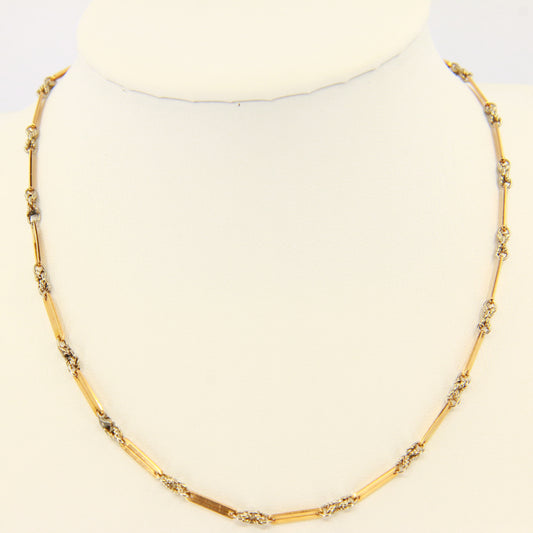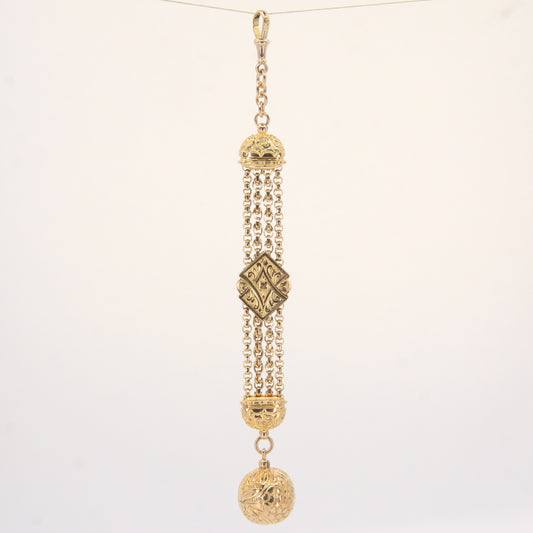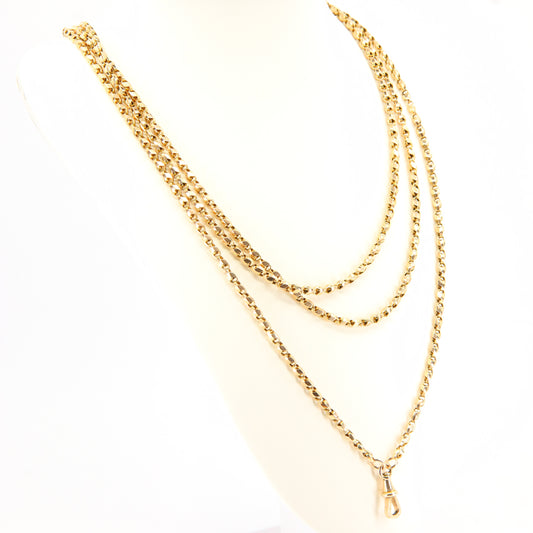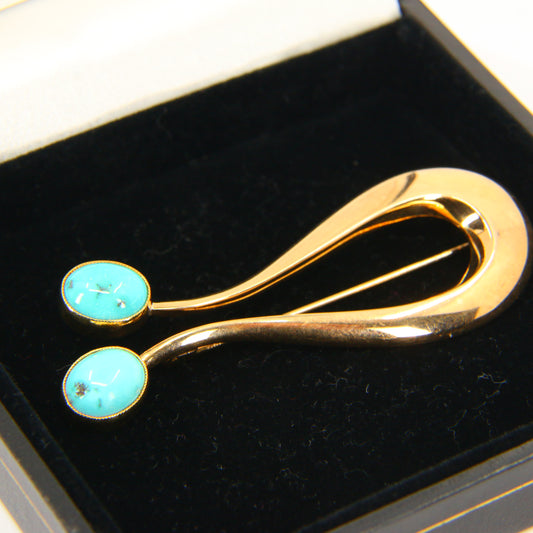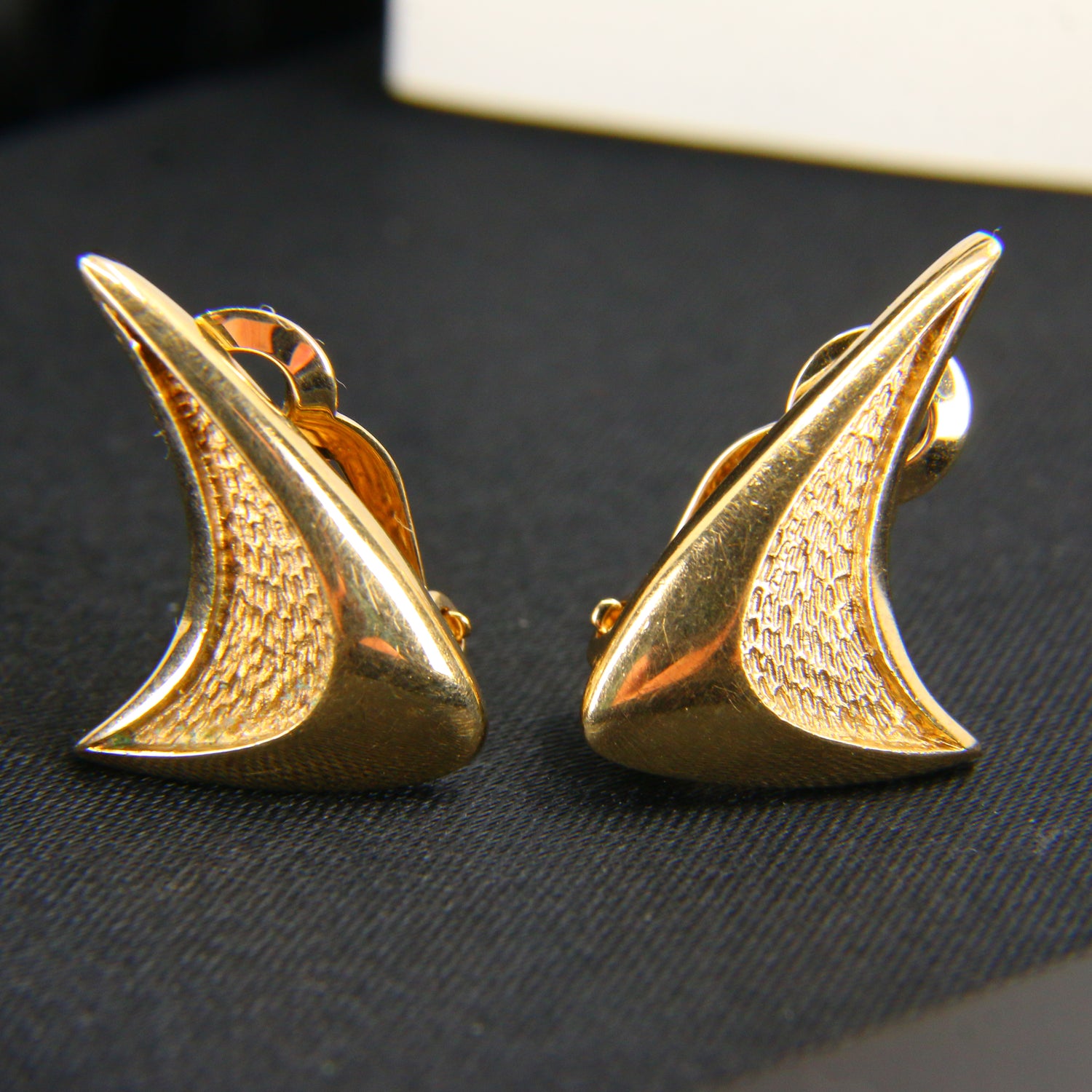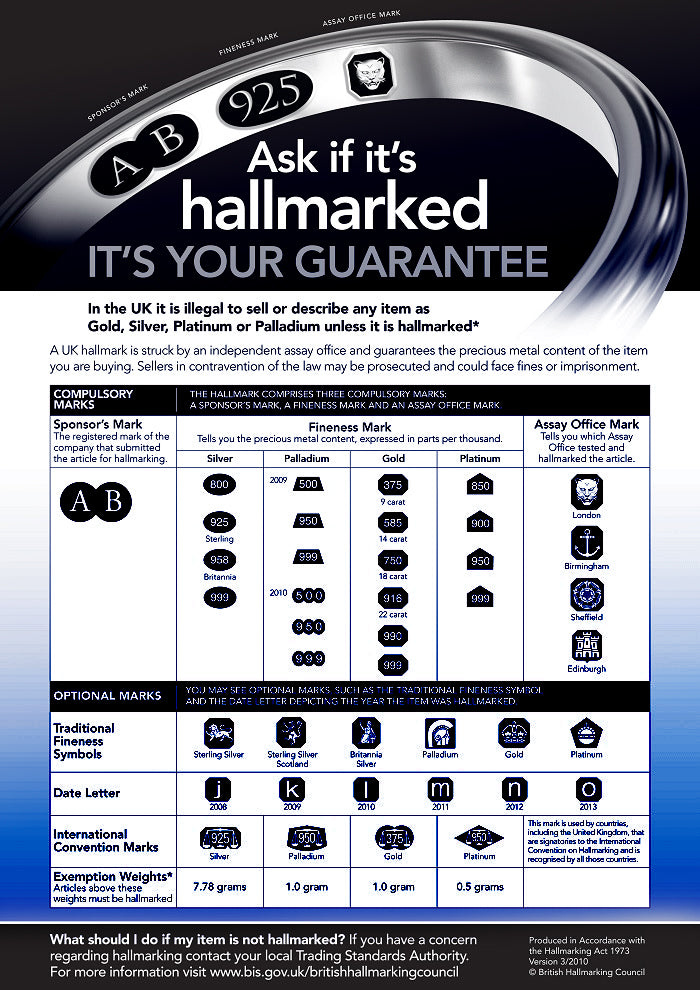
A Complete Guide to British Gold Hallmarks:
Understanding the Marks, Standards, and Their Importance
Gold has long been a symbol of wealth, beauty, and status, and as a result, it has been carefully regulated to protect both consumers and manufacturers. One of the key ways this is achieved is through the use of hallmarks—official stamps applied to gold jewelry and items to certify their purity and authenticity. In the United Kingdom, gold hallmarking has a rich history and plays a crucial role in ensuring that gold products meet high standards. In this guide, we’ll explore British gold hallmarks, their significance, the assay offices responsible for them, and how they help consumers make informed decisions.
What are British Gold Hallmarks?
A British gold hallmark is a series of official stamps applied to gold items to indicate their purity level and to confirm that they have been tested by an authorized assay office. These marks ensure that the gold content meets the required standards set by UK law. Hallmarks serve as proof that the item is genuine and contains the amount of gold it claims, providing protection against fraud.
The History of British Gold Hallmarks
Hallmarking in the UK dates back over 700 years. It originated in the medieval period when the Goldsmiths’ Company in London began testing gold items to ensure their authenticity and prevent the sale of fraudulent goods. Over time, this evolved into a formal system of marking, and today, hallmarking is regulated by the Hallmarking Act of 1973. The Act sets out the legal framework for hallmarking precious metals, including gold, silver, platinum, and palladium.
UK Gold Marks Before Hallmarking Was Standard
Before hallmarking became a legal requirement, many antique gold pieces were simply stamped with “9ct,” “15ct,” “18ct,” or “22ct” to indicate purity. These early carat marks were applied by the maker or retailer, not an assay office, and weren’t formally verified.
Some genuine antique items may show just a carat stamp—or no mark at all. Despite this, many are authentic and test true to their claimed gold content.
At Ian Burton Antiques, we carefully test all stock to ensure accuracy and provide buyers with full confidence—whether for investment, wear, or insurance purposes.
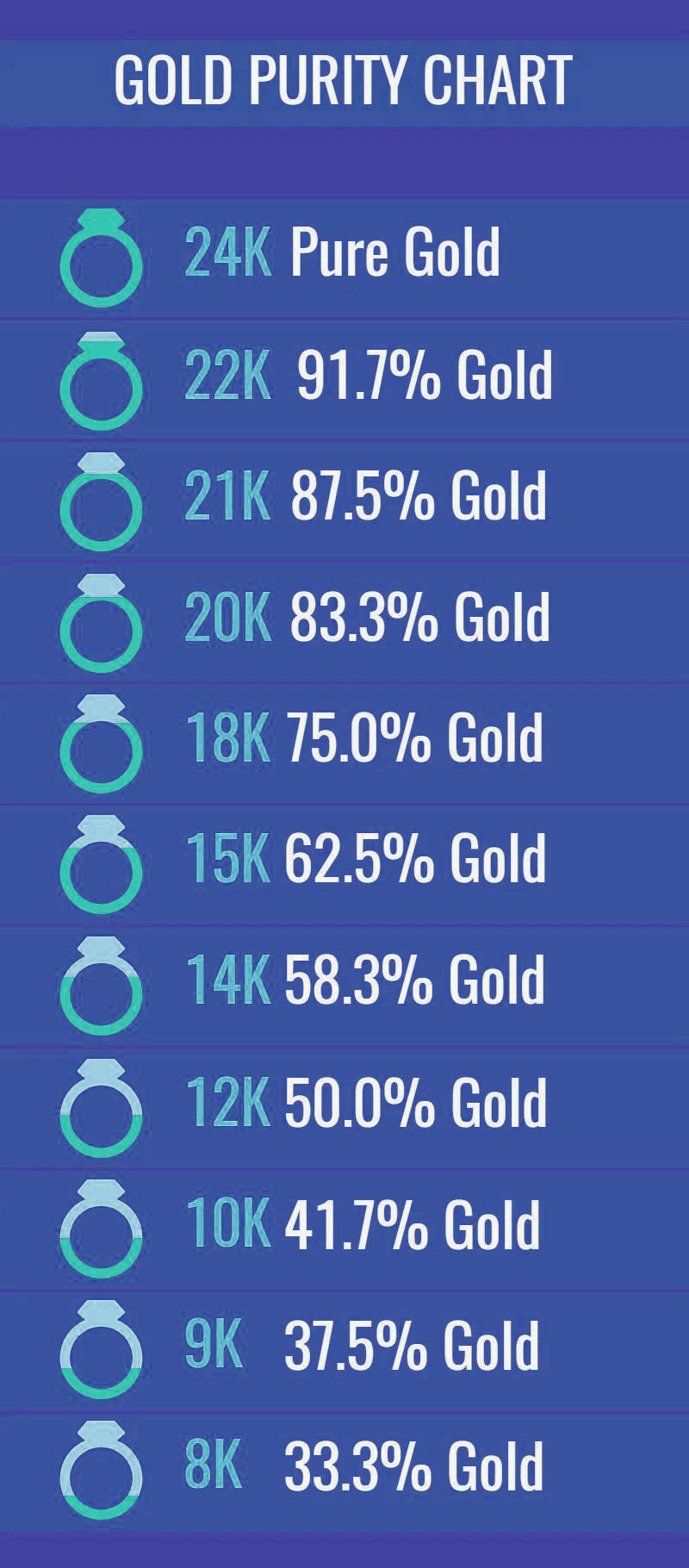
Key Components of a British Gold Hallmark
A typical British gold hallmark contains several components, each serving a distinct purpose. The following marks are commonly found on gold jewelry:
- The Standard Mark (Purity Mark): This indicates the purity of the gold in the item. The most common purity marks for gold are:: 37.5% gold.
- The Assay Office Mark: This mark identifies the assay office that tested and verified the gold’s authenticity. In the UK, there are several official assay offices, including:: The mark features a Scottish thistle, reflecting the country’s rich history of craftsmanship.
- The Maker’s Mark: This mark represents the manufacturer or jewelry maker who produced the item. The maker’s mark is typically a unique symbol, initials, or logo that identifies the specific company or individual behind the creation.
- The Date Mark: This is an optional mark that indicates the year the item was hallmarked. It is typically represented by a letter, and each letter corresponds to a specific year. This helps establish the age of the item and is valuable for collectors and antique enthusiasts.
- The Royal Coat of Arms (Optional): In some cases, especially for high-value pieces, the Royal Arms may be included as a sign of the item's exceptional quality.
Why British Gold Hallmarks Matter
The hallmarking system is essential for ensuring the trustworthiness of gold jewelry in the market. Some key reasons why British gold hallmarks are important include:
- Assurance of Purity: Consumers can be confident that the gold jewelry they are purchasing matches the stated purity. Without a proper hallmark, it’s impossible to verify the gold’s content.
- Protection Against Fraud: The hallmark prevents sellers from passing off lower-quality or fake gold as genuine, reducing the risk of counterfeit goods flooding the market.
- Legal Compliance: In the UK, it is illegal to sell gold jewelry without a hallmark unless the item contains less than 1 gram of precious metal. The hallmark ensures that manufacturers comply with this legal requirement.
- Consumer Confidence: Buyers are more likely to trust products that carry a hallmark, as it serves as an official certification of the item's quality and authenticity.
British Silver Hallmarks: A Quick Overview
While this guide is focused on gold, it’s worth mentioning British silver hallmarks, as they share a similar hallmarking system. Like gold, silver items sold in the UK must meet specific purity standards and be tested by an authorized assay office.
- The Standard Mark for Silver: The most common purity mark for sterling silver is 925, indicating 92.5% silver content.
- Assay Office Marks for Silver: The same assay offices that test gold also test silver. These include London, Birmingham, Edinburgh, and Sheffield.
- Additional Marks: The maker’s mark and date mark can also be found on silver items, similar to gold.
The hallmarking of silver ensures the same level of consumer protection and guarantees the silver's purity, making it as important as gold hallmarking in the UK market.
European Gold Hallmarks: A Brief Comparison
Gold hallmarking is not limited to the UK. Many European countries also have their own hallmarking systems, though they can differ significantly from the British system.
For example:
- In France, gold is marked with the letter “Au” followed by a number indicating its purity. For instance, 750 represents 18-carat gold.
- In Germany, gold purity is marked by a number and a crown symbol, such as 585 for 14-carat gold.
- In Italy, the hallmark system includes a fineness mark (e.g., 750 for 18ct gold), along with the manufacturer’s mark.
While the symbols and formats differ, the basic principle of hallmarking remains the same: to confirm that the gold meets the stated purity level and is a genuine product.
How to Read and Verify a Gold Hallmark
If you're unsure how to read a gold hallmark, here’s a simple guide:
- Look for the Assay Office Mark: This indicates where the item was tested. Familiarize yourself with the symbols of the various assay offices.
- Check the Purity Mark: Ensure the gold purity is what you expect. For example, 18ct should be marked as 750 or 18K.
- Verify the Maker’s Mark: This identifies the manufacturer. You can look up maker's marks online or in hallmark directories.
- Examine the Date Mark: This will tell you when the item was hallmarked, which can be useful if you're purchasing antique or vintage pieces.
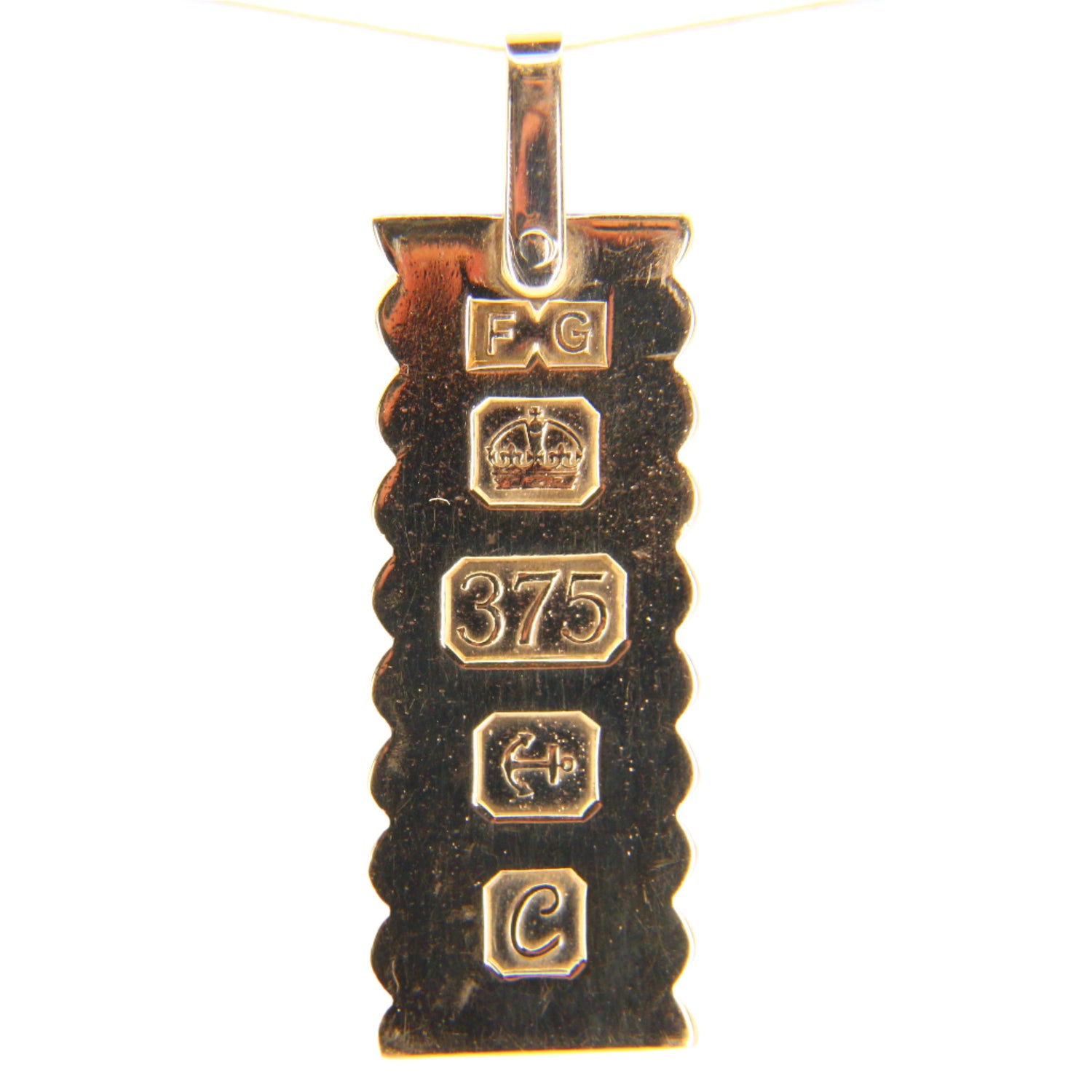
British gold hallmarks are an integral part of the jewelry industry, offering a reliable and regulated way to ensure the quality and authenticity of gold products. Whether you're a buyer or seller, understanding these hallmarks is essential for making informed decisions. While British hallmarks are among the most widely recognized, it’s also helpful to be aware of other European hallmarking systems, especially if you are purchasing gold from international markets. By familiarizing yourself with these marks, you can protect yourself from fraud and ensure that you're buying quality gold jewelry. Thank you for reading.
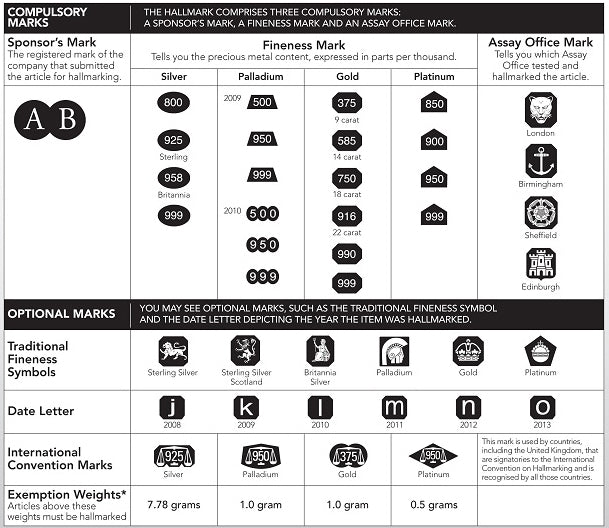
LondonAssayOffice: The Hallmarking Process - What is a Hallmark?
LondonAssayOffice: The Hallmarking Process - Hallmarking
Antique Watch Guard Chains:
-
Antique 18ct Gold Two Tone Albert Chain Bar Link 14.5 Inch
Precio habitual £1,400.00 GBPPrecio habitual -
Antique 18ct Edwardian Fetter Watch Chain Yellow & White Gold 18 Carat Gift
Precio habitual £1,200.00 GBPPrecio habitual -
Antique 18K Gold 3.5 Inch Part Albert Chain With Clasp & Ornate Swivel T-Bar
Precio habitual £1,400.00 GBPPrecio habitual -
Antique 18ct Hallmarked Gold Pocket Watch Albert Chain 14 Inch Yellow Gold Gift
Precio habitual £2,200.00 GBPPrecio habitual -
Antique Solid 9ct Rose Gold Double Albert Watch Chain T Bar Guard Chain
Precio habitual £3,100.00 GBPPrecio habitual -
Antique 9ct Gold Hallmarked Albert Chain Extender 3.5" Swivel T-Bar Pendant
Precio habitual £940.00 GBPPrecio habitual -
Antique 9ct Solid Gold Albertina Chain – 6" Floral Ball Fob Drop
Precio habitual £1,350.00 GBPPrecio habitual -
Antique 62" Long Muff Guard Chain Gold Necklace 9ct Yellow Gold Chain Necklace
Precio habitual £3,200.00 GBPPrecio habitual -
Antique 18ct Gold & Platinum Slider T Bar Chain 14 INCH Albert Watch Guard Chain
Precio habitual £2,250.00 GBPPrecio habitual -
Vintage 9ct T bar Chain Necklace 19 INCH Rose Gold 9 Carat Hallmarked Boxed Gift
Precio habitual £2,000.00 GBPPrecio habitual -
Antique 9ct Albertina Unmarked Yellow Gold 9 inch Chain T Bar with Ball Charm
Precio habitual £920.00 GBPPrecio habitual -
Antique 9ct Victorian Albertina 9-inch 9 Carat Yellow Gold Floral Fob Watch Chain
Precio habitual £1,100.00 GBPPrecio habitual

1967 Vintage Hans Hansen Turquoise Brooch 14ct Gold Brooch Danish Hallmark Gift
What Our Customers Say:
-
Angela on 13 Dec, 2024
"Excellent quality, fantastic price. Very happy with item and sellers customer service."
-
Selena on 10 Dec, 2024
"I love Ian Burton's selections. This one came safe and sound. My second purchase from this seller. Would recommend."
-
Rebecca on 28 Nov, 2024
"Excellent! Item arrived quickly and was very accurately described."

